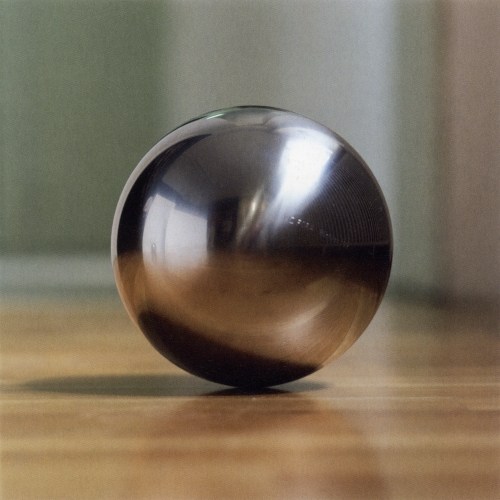Oh no! I mean, oh yeah!

Gerhard Richter did do other steel balls. At the end of his 1973 interview with Irmeline Lebeer, he complains about my favorites of his series, the grey monochromes:
the only problem with them is that they are so beautiful.
And that bothers you?
No, but it’s like a blank canvas. A blank canvas is the most beautiful thing, and yet you can’t just leave it like that. You have to add other elements to it. If it were only a question of perfection, we wouldn’t do anything any more.
You need dynamics and a certain tension.
Without those, everything would be dead. We would all come to an agreement, once and for all, on the sphere. At home, I have these particularly beautiful steel balls.4 But it’s impossible to get any closer to perfection. But we start down that path, it’s all over.
Which is an odd place to put a footnote saying that “Indeed in 1989 and 1992 Richter produced three editions of balls made of gleaming stainless steel.”
The largest was the last, Sphere III [above, via g-r], which was done in an edition of 11. In addition to the title, signature, number and date, each ball is engraved with the name of a Swiss mountain.
Spheres I and II are 8cm [ed. 25] and 5cm [ed. 11], respectively, with no mountains involved. According to the Dallas Museum of Art, which has all of Richter’s balls, they were all published by Anthony d’Offay and fabricated by FAG Kugelfischer, which I will assume is a company. Indeed, under the Schaeffler Group’s guidance, FAG has been a leading German manufacturer of ball bearings for over 120 years.
search results: kugel [gerhard-richter.com]
Previously: Richter’s Balls, Regrets
